At the quiet edge of the Arsenale exhibition route at the 2025 Venice Architecture Biennale, where curated intensity softens into the stillness of a garden, MAD Architects’ Chinese Paper Umbrella emerges as a living threshold between tradition and innovation. Installed in the outdoor space of the China Pavilion, the installation blends ancient Chinese craft with contemporary environmental design. It reimagines the traditional Chinese oil-paper umbrella at architectural scale, offering a shaded, breathable canopy that filters light, responds to weather, and invites stillness.
Chinese Paper Umbrella marks one of the most poignant responses to this year’s Biennale theme, Intelligens. Natural. Artificial. Collective. Through a deceptively humble material palette and a deeply poetic formal language, MAD articulates a position that architecture’s future may well lie in the intelligence of restraint and an embrace of ephemerality rather than monumentality.
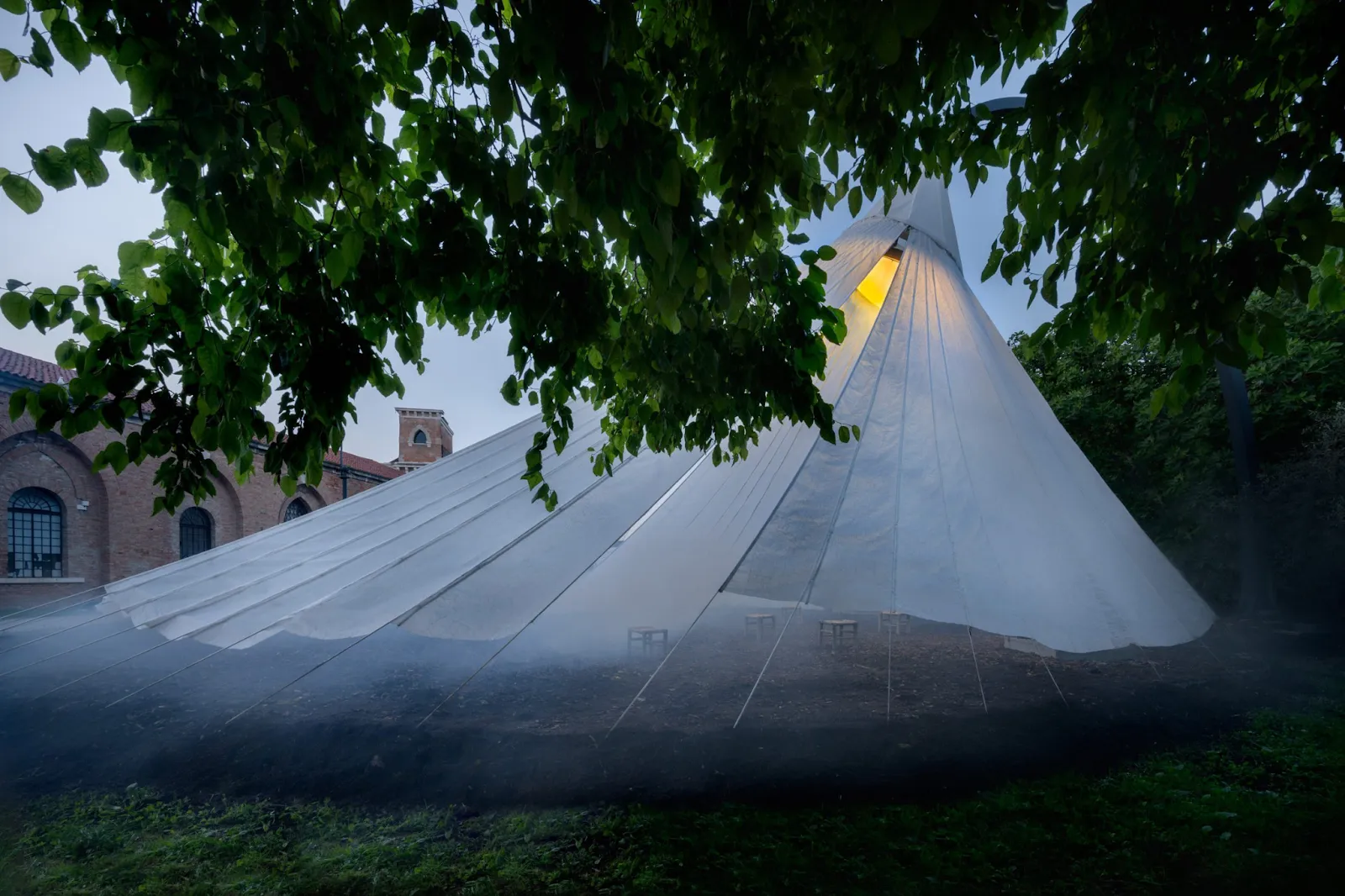
The Umbrella as Memory and Medium
The project draws its conceptual backbone from the traditional Chinese oil-paper umbrella, long associated with everyday rituals, romantic symbolism, and artisanal heritage. Yet MAD’s interpretation of the umbrella is scaled to the architectural a canopy vast enough to welcome a public, delicate enough to suggest transience.

Xuan paper, revered for its role in Chinese calligraphy, becomes the skin of this breathing structure. Coated in successive layers of tung oil, it gains tensile strength and resistance to the maritime humidity of Venice, while retaining its translucence. It is a choice at once poetic and pragmatic, anchoring the design in cultural materiality while rendering it viable in a challenging outdoor context.
The architects’ decision to let the paper age naturally over the Biennale’s duration, its surface yellowing, softening, and gradually succumbing to light and weather, is perhaps the installation’s quietest and most radical gesture. In a global context where permanence is prized, MAD insists on the architecture of impermanence as a virtue.
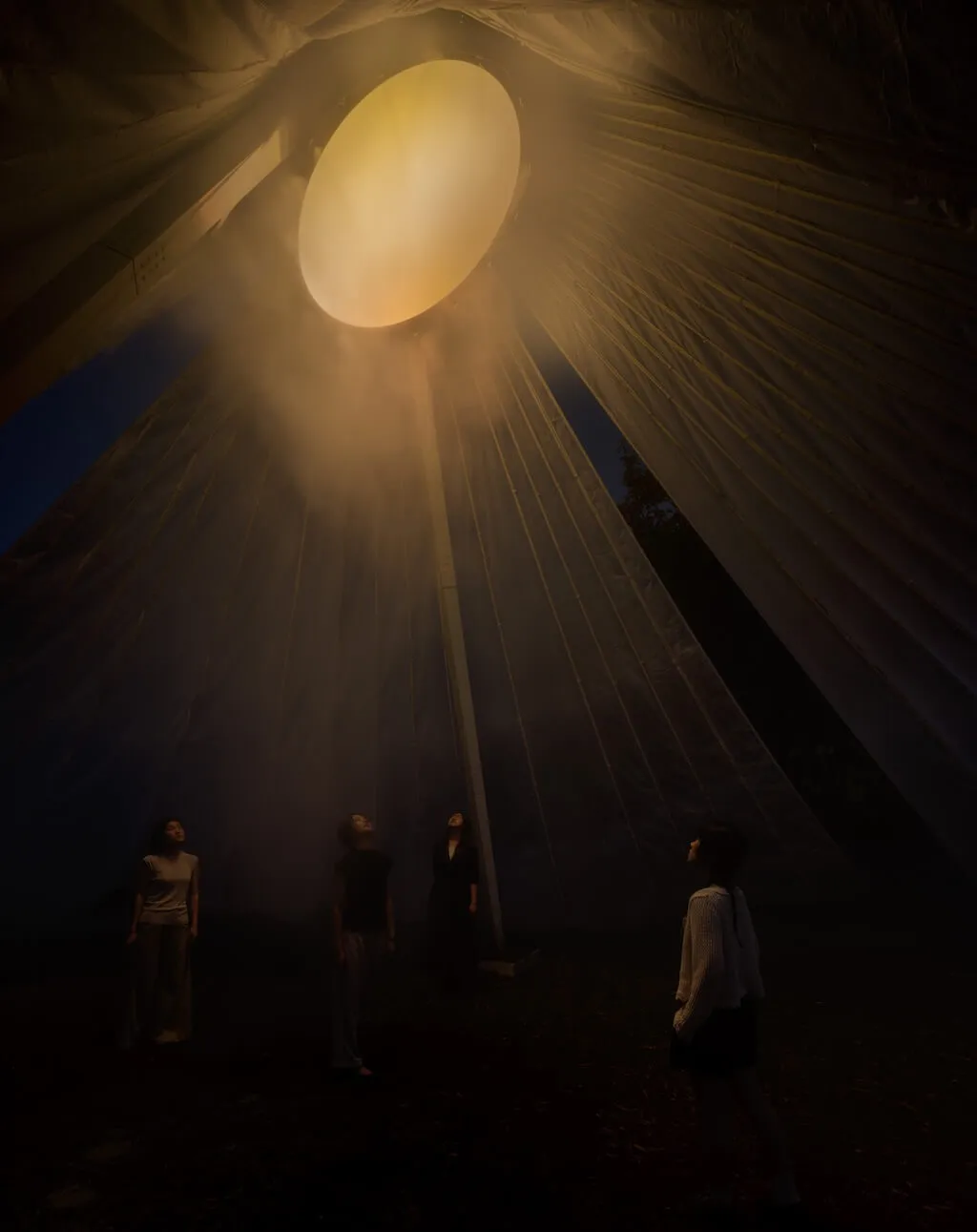
Atmospheric Architecture and Responsive Systems
Stepping under the umbrella is to step into a different register of experience. The light dims and filters through the fibrous paper, casting a soft ambient glow. Air moves differently encouraged by micro-perforations and slits at the base. The temperature drops subtly, aided by a hidden misting system that activates in response to rising heat.
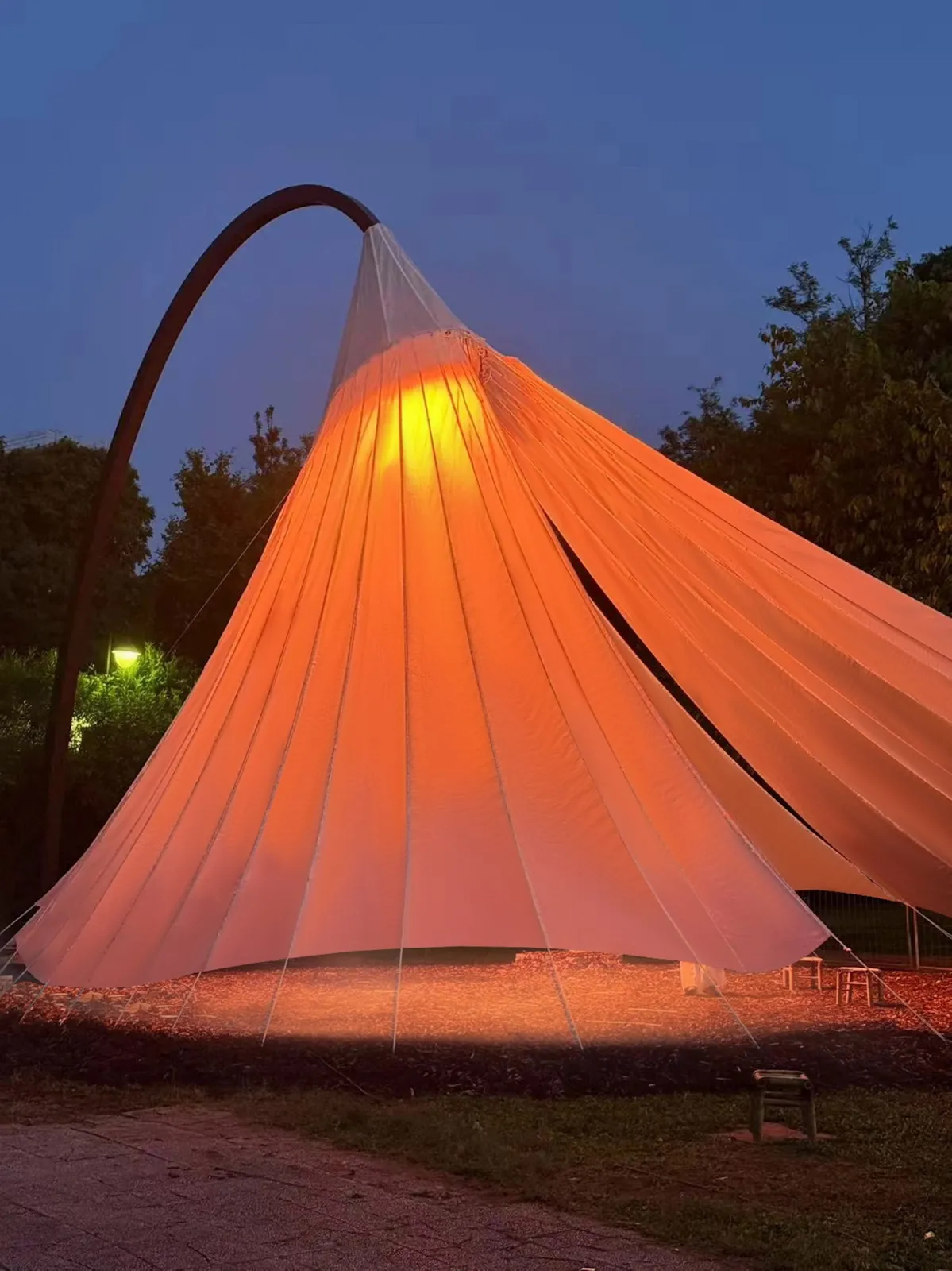
The responsive systems, OPPLE Lighting’s Smart Dynamic Light (SDL), and the sensor-activated misting are deliberately quiet, as extensions of the architecture’s sensitivity to context, its desire to attune rather than impose.
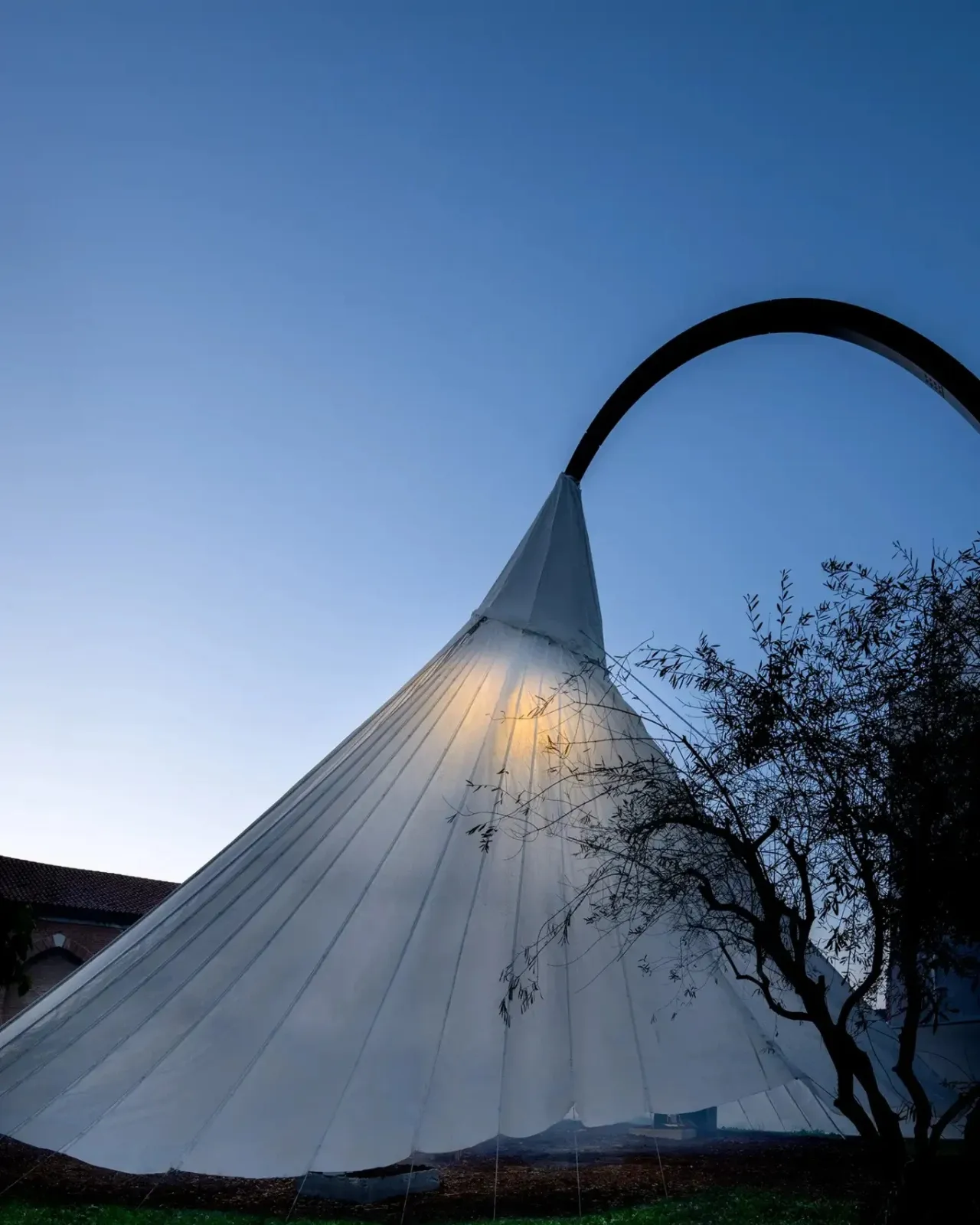
Ma Yansong and his team make the pavilion to endure, breathe, glow, and weep with the weather. It is temporary, and in doing so, makes it unforgettable.
At a Biennale dominated by climate discourse and techno-optimism, MAD’s Chinese Paper Umbrella offers a rare synthesis. It suggests that the path forward may lie in coexistence between ancient crafts and adaptive technologies, between static forms and dynamic environments, between memory and the future.
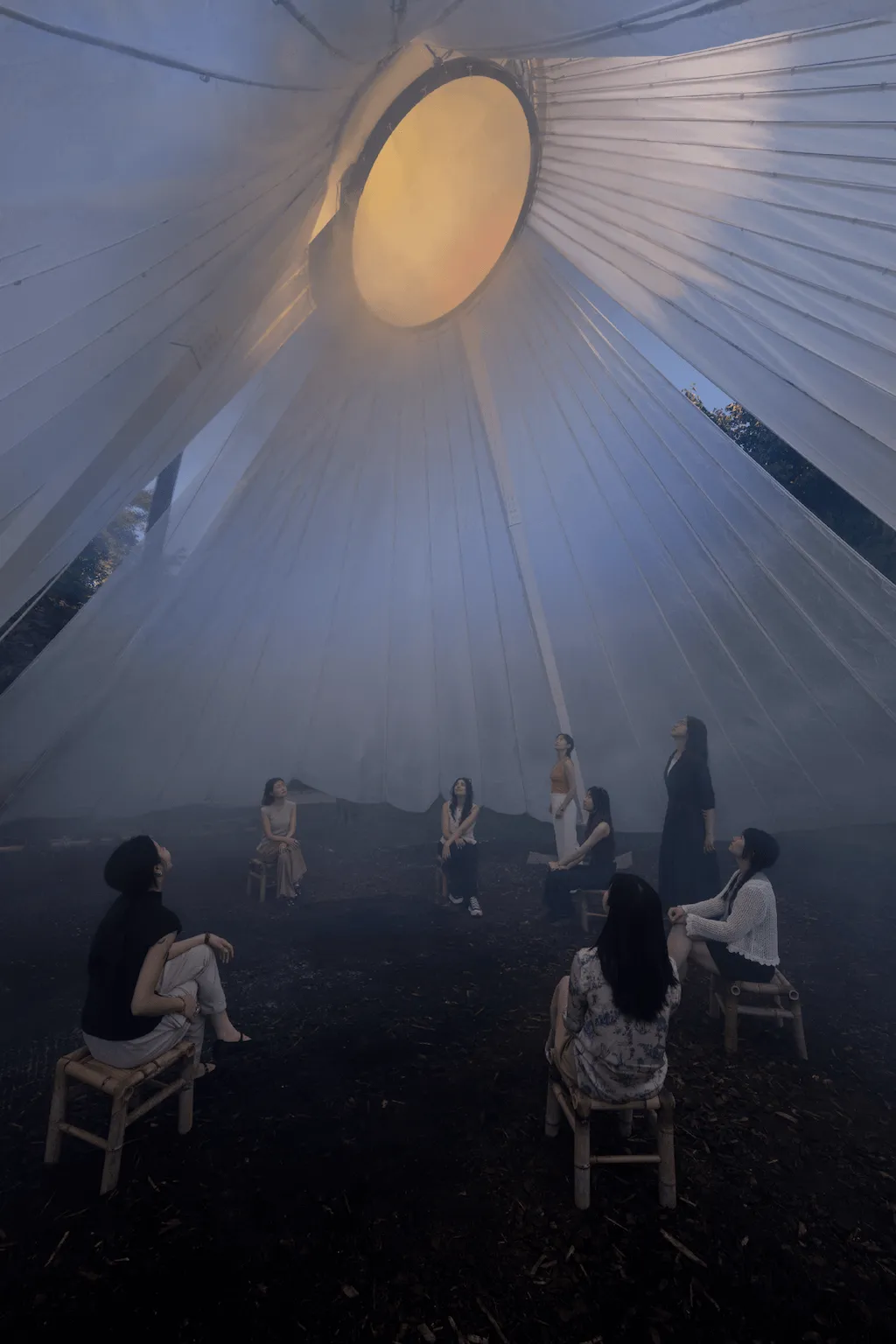
MAD’s Chinese Paper Umbrella is an architectural reminder that design’s greatest power may be its ability to stir feeling, provoke reflection, and, sometimes, simply to offer a place to sit beneath the sky.
Chinese Paper Umbrella Project Details
Architect: MAD Architects
Location: China Pavilion, Venice Architecture Biennale 2025
Images courtesy of MAD Architects.




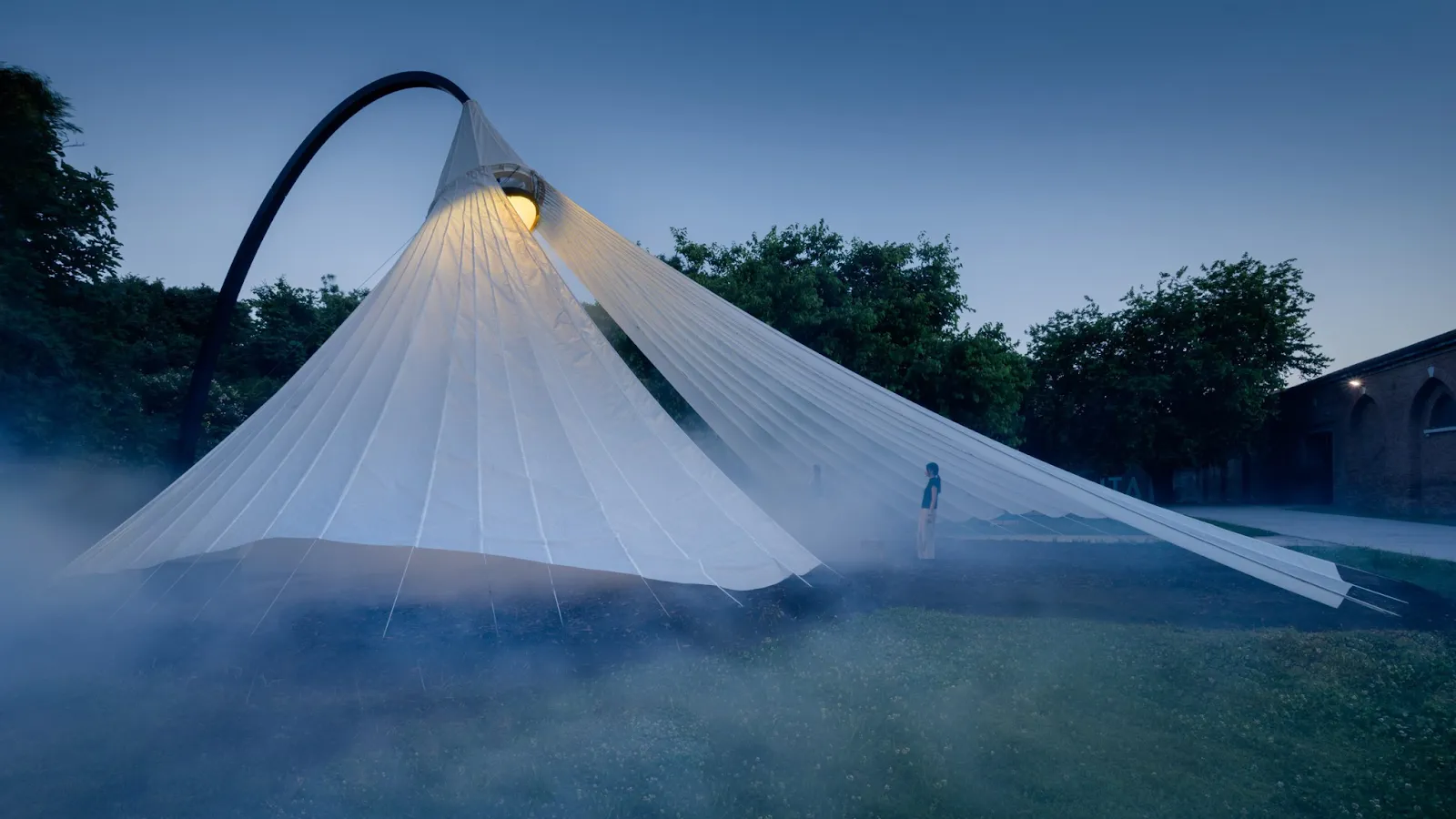











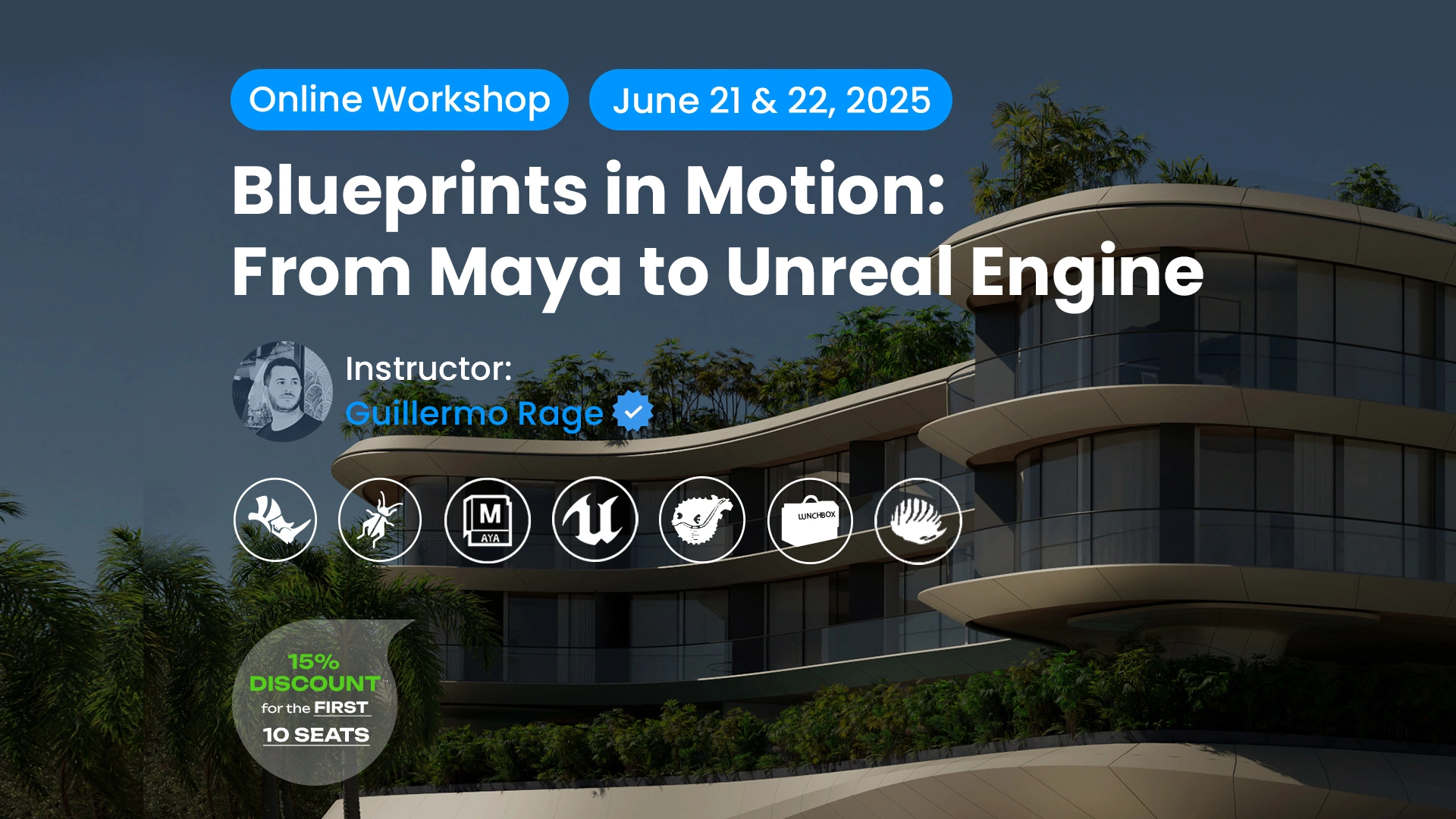










Leave a comment